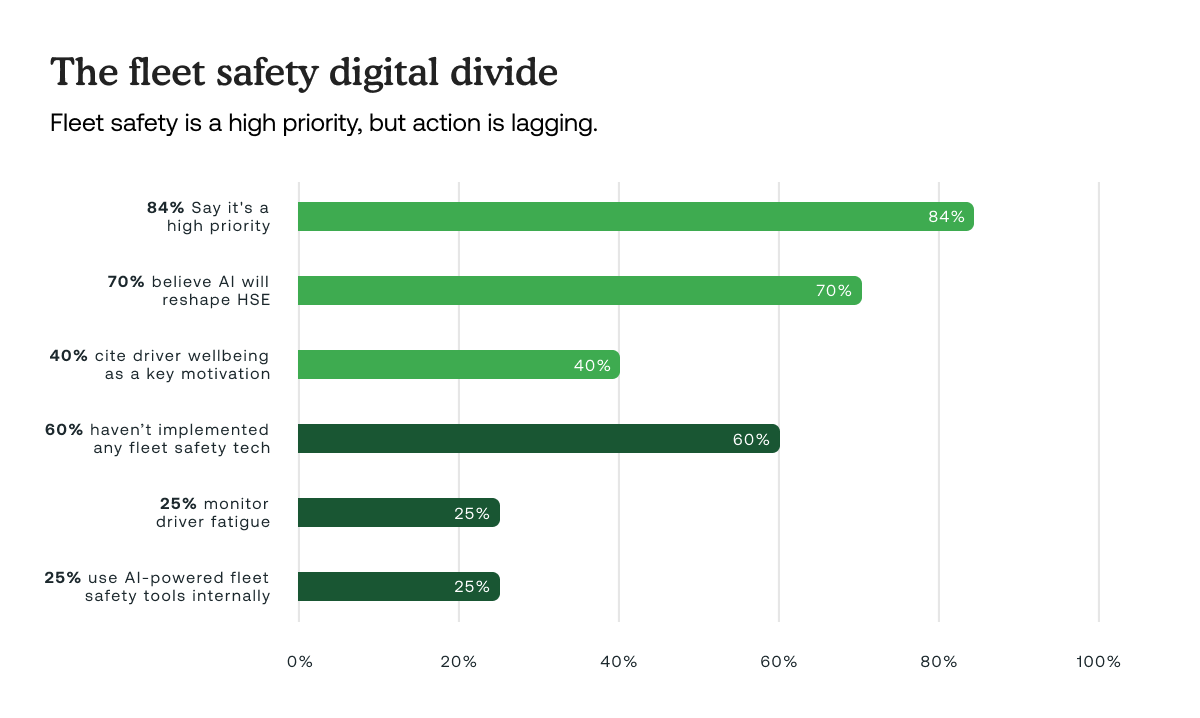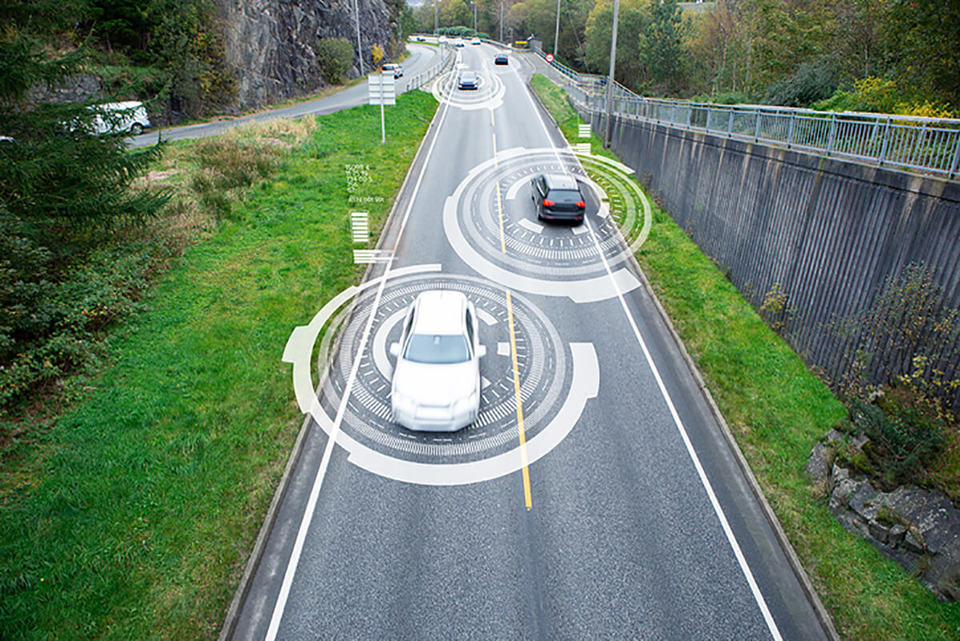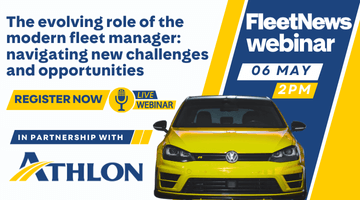While artificial intelligence (AI) and automation are reshaping health, safety and environmental roles, most organisations have yet to extend these technologies to fleet operations, despite growing regulatory scrutiny and operational risks, new research suggests.
The survey of more than 100 health, safety, environmental and operational decision-makers, by fleet safety technology firm Netradyne, found that fleet safety is a high or very high organisational priority for 84% of respondents.
Yet, almost two-thirds (60%) admit they have yet to implement any formal fleet safety technologies or policies.
Many remain reliant on legacy tools, with more than a quarter (29%) using GPS tracking and traditional video-recording dashcams, while a similar amount (27%) depends on transport partners, often with limited visibility and safety oversight.
Only one-in-four (25%) use AI-powered fleet safety tools directly.

“This technology gap is not just a safety issue, it’s a business risk,” said Durgadutt Nedungadi, senior vice-president for EMEA and APAC at Netradyne.
“Fleet incidents impact insurance premiums, compliance exposure, brand trust and delivery performance. By digitising fleet operations, companies can protect people, reduce risk, and build a culture of proactive safety.”
More than 70% of respondents believe digitalisation of health, safety and environmental functions will fundamentally change their roles, particularly through predictive analytics, AI-driven insights, and real-time risk management.
Yet more than a third (36%) are still in the early stages of digitalising operations, and only 20% are highly digitised with advanced tools like AI and automation.
This disconnect is especially pronounced in fleet operations, where traditional tools like GPS tracking remains commonplace, and safety oversight is often outsourced, limiting visibility and control.
Some 80% of respondents said that GPS location and arrival timelines are the only metrics they receive from their transport partners, and just 14% get real-time alerts and video.
Furthermore, while driver-fatigue is a leading cause of road accidents, only 25% of organisations actively monitor it.
Many also fail to use real-time data to flag risky driving or ensure compliance with transport legislation.
This, says Netradyne, exposes a major missed opportunity to prevent fleet-related incidents using real-time driver behaviour data.
Despite low adoption, confidence in AI is growing with 45% planning to adopt AI and automation in the near future.
Among current users, 48% report faster incident response, 45% see improved compliance reporting, and 40% note better driver behaviour.
AI is also enhancing driver wellbeing and engagement. Nearly 40% cite driver engagement and welfare as a key reason for prioritising fleet safety, and almost 20% now reward positive driving behaviours.
“HSE (health, safety and environmental) leaders are embracing digital tools, but when it comes to fleet safety, a dangerous gap remains,” Nedungadi added.
“Vision-based AI offers the visibility and control organisations need to meet rising safety expectations and lead with care.”
Cut your risk with the new Fleet News safety report.





















Login to comment
Comments
No comments have been made yet.